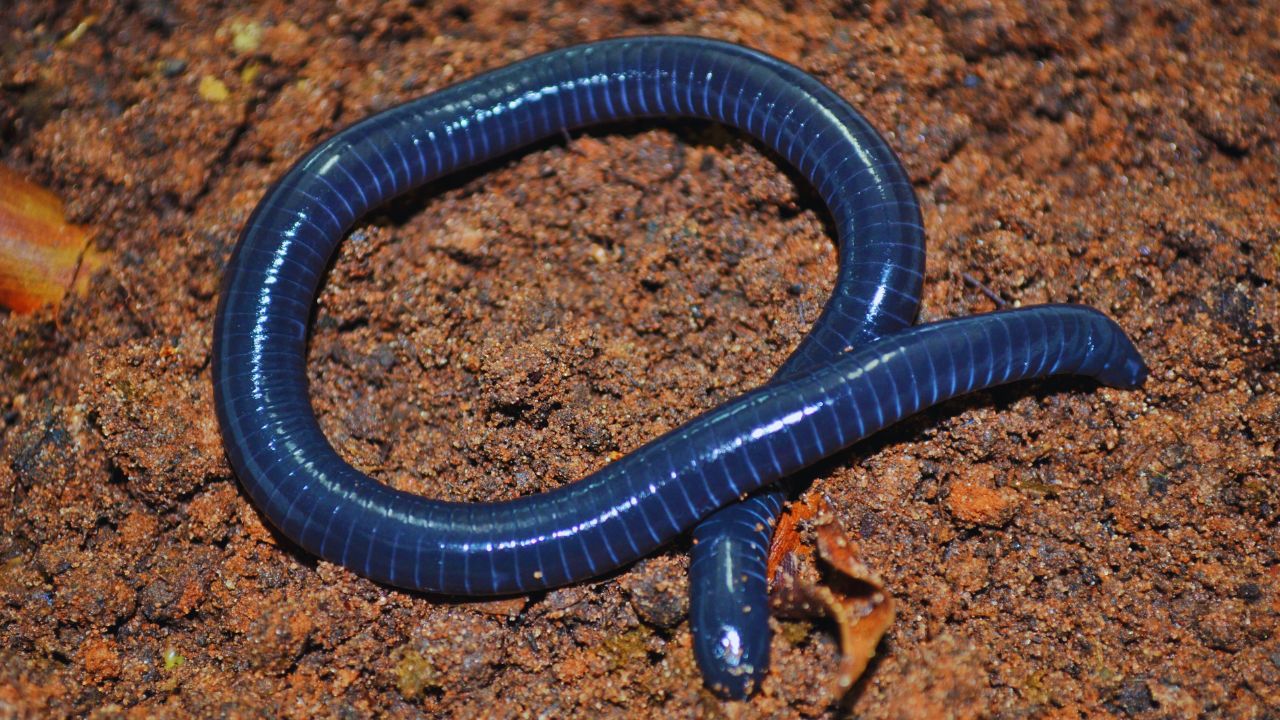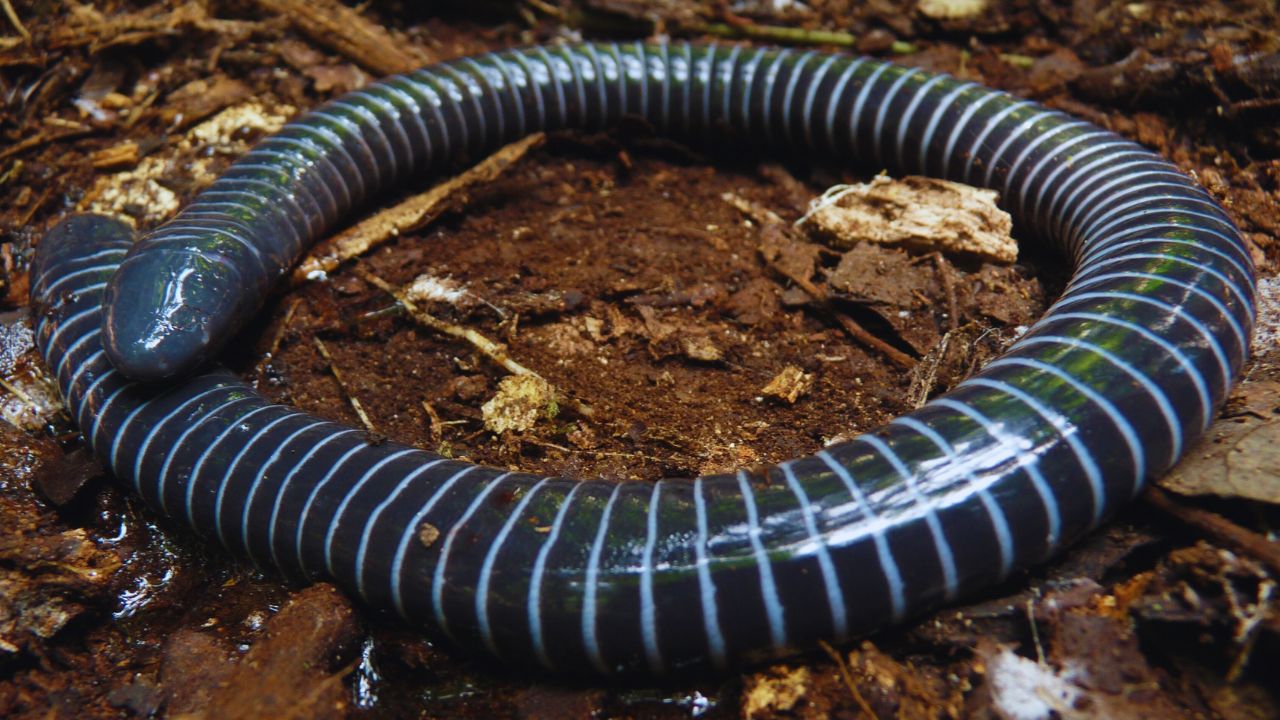Because of their distinct physiology, limbless caecilians—a genus of amphibians that burrow—have long attracted the attention of scientists. Their capacity to live without lungs, which sets them apart from most other vertebrates, is one of their most amazing characteristics. There has been much investigation and scientific interest in the topic of how lungless caecilians maintain their breathing and physiological processes in the absence of lungs.

Lungs in the animal world are essential for breathing because they make it easier for an organism to exchange carbon dioxide and oxygen with its surroundings. Lungless caecilians, a subfamily of Gymnophiona, defy this expectation by surviving in the absence of these vital organs. Their remarkable adaptability begs a number of issues about their respiratory systems and their means of obtaining oxygen, which is essential to their existence.
Overview of Respiratory Adaptations in Lungless Caecilians
| Aspect | Description |
|---|---|
| Primary Mode of Respiration | Cutaneous respiration through highly vascularized skin. |
| Skin Structure | Dense network of capillaries beneath the epidermis facilitates gas exchange. |
| Habitat | Moist, underground environments provide ideal conditions for cutaneous respiration. |
| Behavioral Adaptations | Burrowing and living in humid areas to maintain skin moisture and optimize oxygen absorption. |
| Metabolic Rate | Slow metabolism to reduce oxygen requirements in low-oxygen environments. |
| Evolutionary Background | Gradual loss of lungs due to adaptation to burrowing and oxygen-poor habitats. |
Survival Adaptations
It’s important to investigate the many physiological and anatomical adaptations that lungless caecilians have in order to comprehend how they breathe. Cutaneous respiration is one of the main ways that these amphibians get oxygen. In this procedure, oxygen is immediately absorbed via the skin, which has a high vascular content and gas permeation. Lungless caecilians are not the only amphibians that use cutaneous respiration; frogs and salamanders, among others, use it to varied degrees. On the other hand, it serves as the main means of breathing for lungless caecilians, making up for the lack of lungs.

Lungless caecilians have skin that is specifically designed for gas exchange. Beneath the epidermis, it has a thick network of capillaries that efficiently diffuse oxygen from the surrounding environment into the circulation. This capillary network is necessary to keep the body’s oxygen levels at an appropriate level and to support the animal’s metabolic demands.
Adaptations in Behavior
Lungless caecilians have physiological adaptations, but they also display certain behaviors that improve their skin’s capacity to absorb oxygen. These activities are directly related to their natural habitat, which usually consists of subterranean, damp areas. Lungless caecilians that inhabit these kinds of habitats are able to keep their skin at the proper moisture content, which is essential for cutaneous respiration. Their burrow’s damp dirt or leaf litter, which keeps their skin moisturized and ready to exchange gases, is the perfect habitat for this activity.
Furthermore, it is well known that lungless caecilians have a sluggish metabolism, which lowers their total oxygen consumption. They can thrive in low-oxygen settings where other creatures could perish because to their metabolic adaptation. They can survive in their underground homes, where oxygen levels might be lower than in the open air, by reducing their oxygen requirements.
Evolutionary Angle
Scientists have disagreed greatly over the evolutionary origins of lungless caecilians and their special respiratory adaptations. Like other amphibians, it is thought that the progenitors of current lungless caecilians may have possessed lungs. These predecessors relied more and more on cutaneous respiration as they evolved to lead burrowing lives in low-oxygen habitats. since of this change, it’s possible that ultimately all lungs were lost since they were no longer required for living.

Additional information on the evolution of lungless caecilians has been gleaned from genetic research. Studies have shown that these animals still have some of the genes involved in lung formation, but in an altered or dormant form. This implies that lungless caecilians gradually lost their lungs due to evolutionary constraints to fit into a particular ecological niche.
A prime example of regressive evolution is the ultimate loss of a once-beneficial characteristic due to redundancy—the loss of lungs in lungless caecilians. In the animal realm, this mechanism is not unusual; other species that have adapted to certain conditions exhibit it. For lungless caecilians, losing their lungs seems to have been a successful adaptation that has let them take advantage of a special ecological niche.
Evolutionary and Genetic Insights into Lungless Caecilians
| Evolutionary Aspect | Details |
|---|---|
| Ancestral Traits | Ancestors likely had lungs, similar to other amphibians. |
| Genetic Studies | Presence of modified or inactive lung development genes. |
| Regressive Evolution | Loss of lungs due to redundancy and adaptation to specific ecological niches. |
| Adaptation Process | Gradual adaptation to cutaneous respiration over time. |
Research and Insights from Science
It has been difficult for scientists to investigate the respiratory systems of lungless caecilians. These secretive animals are hard to see in their native environment, and studying them in captivity is challenging due to their tunneling habits. Notwithstanding these difficulties, scientists have come a long way in comprehending how these creatures breathe and thrive in the absence of lungs.

Measuring the amount of oxygen absorbed via the skin of lungless caecilians is one of the main techniques used to research them. via the use of controlled conditions and close observation of the animals’ oxygen levels, scientists have shown that the major method by which the animals receive oxygen is via cutaneous respiration. These investigations have also shown the amazing capacity of lungless caecilians to control their oxygen use in response to external factors.
Apart from in vitro investigations, field observations have yielded significant understandings on the ecology and behavior of lungless caecilians. Studies have shown that these creatures are most active when there is a lot of humidity in the air, which is also when cutaneous respiration is at its best. Lungless caecilians are likely to stay in their burrows during dry seasons since the moisture content inside is greater, lowering the chance of dehydration and guaranteeing that their skin continues to absorb oxygen.
Consequences for Preservation
The conservation of lungless caecilians is significantly impacted by our understanding of their respiratory adaptations. These creatures are often found in tropical and subtropical areas, where their existence is seriously threatened by environmental deterioration and habitat loss. Lungless caecilians are especially sensitive to changes in their habitat, such as deforestation, soil compaction, and climate change, since they depend on wet, subterranean settings.
The special breathing requirements of lungless caecilians must be considered in conservation efforts aiming at their protection. Their existence depends on maintaining their native habitats, which includes keeping the soil hydrated. In addition, further study of their ecology and behavior is required to create conservation plans that will work and guarantee the long-term survival of these amazing animals.
Scientific Research and Conservation Implications
| Research Focus | Findings and Observations |
|---|---|
| Oxygen Uptake Studies | Cutaneous respiration has been confirmed as the primary means of oxygen absorption. |
| Field Observations | Activity peaks during high humidity; burrowing behavior helps maintain moisture. |
| Conservation Concerns | Habitat loss, environmental degradation, and climate change pose significant threats. |
| Conservation Strategies | Preserving moist habitats and further research into their ecology and behavior. |

An amazing example of evolutionary adaptation is the capacity of lungless caecilians to breathe without lungs. By using a blend of cutaneous respiration, behavioral tactics, and metabolic modifications, these frogs have effectively secured a distinct and specialized position for themselves within the animal world. Although there is still much to learn about these mysterious animals, the research that has been done so far has shed light on the intricate interactions between environment, physiology, and anatomy that enable lungless caecilians to survive in the absence of lungs. Scientists may find even more unexpected adaptations in these species when they investigate them more, which would help to illuminate the astounding variety of life on Earth.





